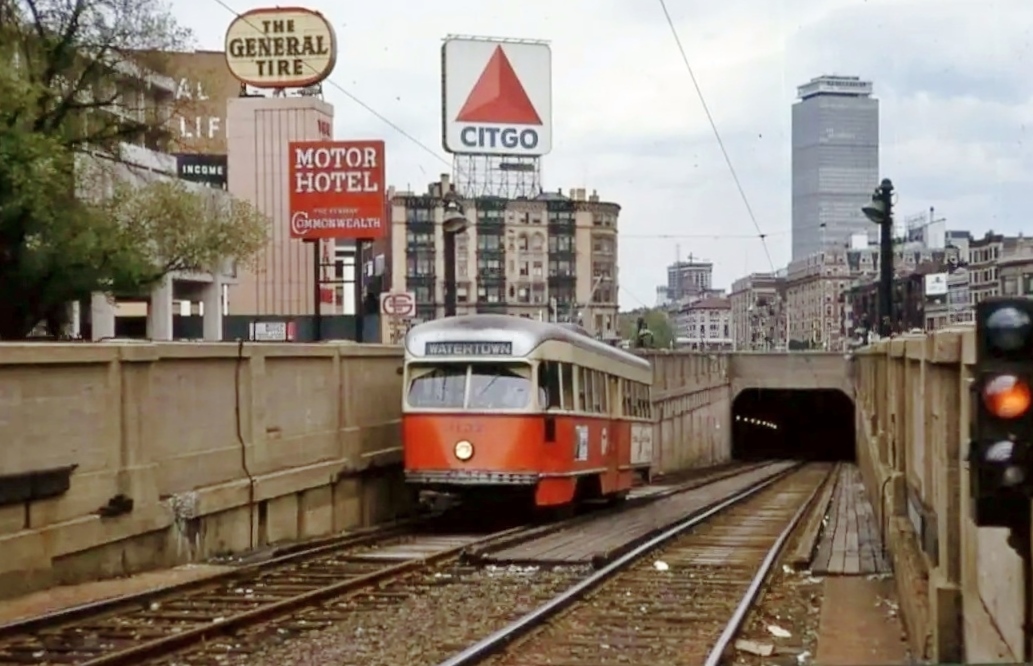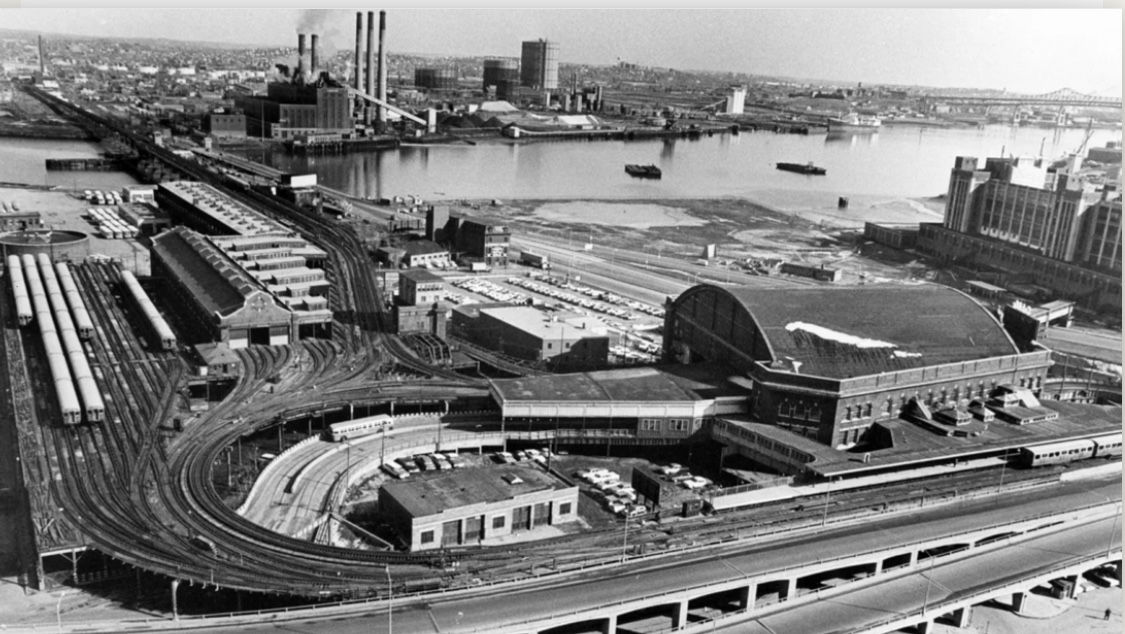You are using an out of date browser. It may not display this or other websites correctly.
You should upgrade or use an alternative browser.
You should upgrade or use an alternative browser.
"Dirty Old Boston"
- Thread starter theSil
- Start date
Charlie_mta
Senior Member
- Joined
- Jul 15, 2006
- Messages
- 4,555
- Reaction score
- 6,473
Wow, the demolition for I-95 through Roxbury and JP is really obvious in the 2nd aerial.
atlantaden
Senior Member
- Joined
- May 31, 2006
- Messages
- 2,603
- Reaction score
- 2,731
stick n move
Superstar
- Joined
- Oct 14, 2009
- Messages
- 12,077
- Reaction score
- 18,831
The EGE
Senior Member
- Joined
- Jun 29, 2013
- Messages
- 1,761
- Reaction score
- 4,681
Everett was added in 1919, almost two decades after Sullivan. It was never intended to be a permanent terminal, just the start of an extension to Malden (or beyond) with an elevated structure over Main Street. It reduced the round trip distance for streetcars running to Sullivan by two miles, allowing some of those streetcars to be reallocated elsewhere - much like why the Roslindale extension is now proposed. Unlike Rozzie would be, Everett primarily served as a streetcar transfer point, as other than the small residential neighborhood on the east side of Broadway there wasn't much around except for heavy industry. Its location was chosen because it was on the grounds of the existing Everett shops, minimizing expensive property acquisitions.
By 1926, the El to Malden was dead because no one wanted new elevated lines. The proposal in the 1926 report was to extend from Everett station over the Saugus Branch to Lynn. Good for Malden and Lynn, but no real improvement for the Broadway corridor in Everett. I don't believe there was ever a serious proposal to tunnel under Broadway, probably because the BERy built everything outside Boston city limits on its own dime.
By 1945, all planned extensions were along existing rail rights-of-way, and the Western Route to Reading was a much better fit than the Saugus Branch - especially since Lynn would be served more directly by what is now the Blue Line. A circumfrential route from Everett to Boston via Medford was studied at legislative demand, but found not to be needed. (The report also studied some ways to replace the existing El structure between North Station and Sullivan Square, but recommended the Sullivan Square–Everett section be retained as a feeder.)
In March 1963, the Everett-terminating trackless trolley routes were converted to diesel bus. With ridership down substantially since its peak, and diesel buses able to use the de-electrified stretch of Alford Street to Sullivan, Everett was closed nights and Sundays at that time. It was cheaper to run the buses to Sullivan at that time than to staff Everett station and run rather empty trains there.
When the Haymarket North Extension was designed, the line was trenched through Sullivan Square to avoid grade crossings. (Elevated on the Western Route alignment would have conflicted with the overpass and I-93, and no one wanted to keep the existing elevated.) Without the ability to connect it to the new route, the Sullivan Square–Everett stub would have been a shuttle service, requiring an additional transfer versus simply running buses to Sullivan Square. And so, in 1975, Everett station passed into the dustbin of history.
tl;dr: The industrial location never served Everett well, and keeping it was not compatible with the highly-desired extension to Malden and beyond.
By 1926, the El to Malden was dead because no one wanted new elevated lines. The proposal in the 1926 report was to extend from Everett station over the Saugus Branch to Lynn. Good for Malden and Lynn, but no real improvement for the Broadway corridor in Everett. I don't believe there was ever a serious proposal to tunnel under Broadway, probably because the BERy built everything outside Boston city limits on its own dime.
By 1945, all planned extensions were along existing rail rights-of-way, and the Western Route to Reading was a much better fit than the Saugus Branch - especially since Lynn would be served more directly by what is now the Blue Line. A circumfrential route from Everett to Boston via Medford was studied at legislative demand, but found not to be needed. (The report also studied some ways to replace the existing El structure between North Station and Sullivan Square, but recommended the Sullivan Square–Everett section be retained as a feeder.)
In March 1963, the Everett-terminating trackless trolley routes were converted to diesel bus. With ridership down substantially since its peak, and diesel buses able to use the de-electrified stretch of Alford Street to Sullivan, Everett was closed nights and Sundays at that time. It was cheaper to run the buses to Sullivan at that time than to staff Everett station and run rather empty trains there.
When the Haymarket North Extension was designed, the line was trenched through Sullivan Square to avoid grade crossings. (Elevated on the Western Route alignment would have conflicted with the overpass and I-93, and no one wanted to keep the existing elevated.) Without the ability to connect it to the new route, the Sullivan Square–Everett stub would have been a shuttle service, requiring an additional transfer versus simply running buses to Sullivan Square. And so, in 1975, Everett station passed into the dustbin of history.
tl;dr: The industrial location never served Everett well, and keeping it was not compatible with the highly-desired extension to Malden and beyond.
Charlie_mta
Senior Member
- Joined
- Jul 15, 2006
- Messages
- 4,555
- Reaction score
- 6,473
Great photos, but the black and whites do make it look starker and less inviting than it actually was. I worked in the downtown business district in the late 1960s, and all of the Boston core at that time was a great and exciting place, except of course for the seedy Combat Zone.
BeyondRevenue
Active Member
- Joined
- Mar 13, 2020
- Messages
- 549
- Reaction score
- 1,148
Ooooh! Nice find. A pic of the rare Pre-93 Tobin connector in its natural habitat. You can even see the pre-Y attachments on the upper and lower decks!
So many lessons to learn here.
This is why Rutherford Ave was built up at the time and why it remains as a vestigial overbuild awaiting a road diet.
And another reason why the Big Dig was -- and is -- a great project... all those ramps were killed or sunk under Charlestown to be moved to the rail-side. So much of this is now beautiful, quiet, vibrant, usable, taxable - livable space! Sink all the highways! Cap 'em all!
Charlie_mta
Senior Member
- Joined
- Jul 15, 2006
- Messages
- 4,555
- Reaction score
- 6,473
The City Square area was severely sliced and diced by the ugly, noisy and shadow casting Tobin elevated approaches and on/off ramps. which were stacked above the already ugly and noisy OL elevated line. Tunneling the highway was out of reach financially when it was built in the early 1950s because it predated the interstate highway 90/10 federal funding that came about in the late 1950s. The project to remove the elevated highway and ramps, and tunnel the Tobin approaches under City Square, was actually a separate project that was built just prior to the Big Dig, and could have functioned by itself even if the rest of the Big Dig had not been built.
BeyondRevenue
Active Member
- Joined
- Mar 13, 2020
- Messages
- 549
- Reaction score
- 1,148
If we're splitting hairs, yes. I realize it was done by the Central Artery North Area (CANA) project under MDPW, as the Big Dig was starting. So Massachusetts paid for that bit at first. Then got a little help.The City Square area was severely sliced and diced by the ugly, noisy and shadow casting Tobin elevated approaches and on/off ramps. which were stacked above the already ugly and noisy OL elevated line. Tunneling the highway was out of reach financially when it was built in the early 1950s because it predated the interstate highway 90/10 federal funding that came about in the late 1950s. The project to remove the elevated highway and ramps, and tunnel the Tobin approaches under City Square, was actually a separate project that was built just prior to the Big Dig, and could have functioned by itself even if the rest of the Big Dig had not been built.
It's like consolidating your first year student loans into one big consolidated loan. Also, like a modern student debt load, a Big Dig hurts like hell to pay off in the first few years but gets easier the more years go by and you realize the investment was worth it.
So in bulk finances, dependent deadlines, and shared planning resources, I would say that the CANA work is very much part of the Big Dig. All the finish work was Big Dig, too.
Charlie_mta
Senior Member
- Joined
- Jul 15, 2006
- Messages
- 4,555
- Reaction score
- 6,473
That's pretty awesome. Looks like around 1950 because I think I see the Tobin Bridge in Charlestown. but no sign yet of the old elevated Central Artery built in the early 1950s.
atlantaden
Senior Member
- Joined
- May 31, 2006
- Messages
- 2,603
- Reaction score
- 2,731
A lovely picture of the Queen’s visit to Boston.
 BOSTON 3132 by Michel REPS, on Flickr
BOSTON 3132 by Michel REPS, on Flickr Found Kodachrome Slide -- Trinity Church, Boston, Massachusetts by Thomas Hawk, on Flickr
Found Kodachrome Slide -- Trinity Church, Boston, Massachusetts by Thomas Hawk, on FlickrPlen-T-Pak
Active Member
- Joined
- Jul 23, 2007
- Messages
- 251
- Reaction score
- 480
I had no idea that former HoJo's on Comm Ave was ever not a HoJo's prior to dorm conversion.


 I arrived in Boston for a masters program in architecture forty years ago this week.
I arrived in Boston for a masters program in architecture forty years ago this week. IMAG0032-Paul Revere House Boston Aug 1966
IMAG0032-Paul Revere House Boston Aug 1966